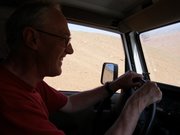Oh no, not another Heron picture - # 08/168
 It's probably easy to guess why I showed this. I liked the "snake-skin-like" markings all down the Heron's throat.
It's probably easy to guess why I showed this. I liked the "snake-skin-like" markings all down the Heron's throat.
Ideally, you would want to see the bird as I did, tucked away at the end of a small isolated pond hunting for frogs and whatever else. That would give you the real atmosphere and spirit of the scene: the isolation, the quietness, the wildness - ironically, a piece of total wildness in the middle of one of the most densely populated areas of the British Isles.
However, the camera cannot capture that wild, isolated image. All you would see is a spread of water with a tiny "something" standing at one end. This photo needed a 400mm telephoto.
There are many Herons around the Richmond area, along the river and in the Park. That is a good sign that wild life is thriving. Whilst "hunting" this Heron I also saw a hawk - another good sign.
Camera: Olympus E3. Lens at 400mm equivalent. P Auto selecting ISO 320. 1/250 sec.



He's magnificent.
ReplyDeleteThe markings look like a feather.
ReplyDeleteThe expression is priceless. The markings on this bird are unusual - well unusual to me. I saw a lot of herons in Ohio - good to see your beautiful shot, Chuckeroon. What a privilege to see such a beautiful bird as this. That's how I felt when I saw them in America.
ReplyDeleteYes! Another heron picture is always welcome. He is giving you the hairy one-eyed stare: "hmmm, is that photographer too big for lunch? Possibly problematic to catch."
ReplyDeleteHe's great. That's some lens you have!
ReplyDeleteNice photo...
ReplyDeleteIt is encouraging to see wild herons in an urban setting.
Ironically, we often see more bird life around Seattle than we do out in the 'wild' at national parks! Out in the wild it's easy to go for days without seeing anything... but in the wetlands near Lake Washington there are dozens of species in abundance.
I have yet to get a good explanation of this from any Audubon expert.